You are in:

UK
Old Money |

History
of the "Old Money" System in the UK
On this page we look at a brief history of
the UK Old Money System.
Nothing to do with the Anglia, but I thought it would be
fun to look at.

| Some
of the pages within the site quote Original
Historical UK Prices of Anglia’s and other
related products. Just in case you are not of
the older persuasion (or are not from the UK), a
little bit of history about the UK “Old
Money” System may not go amiss. The money in
the UK in “Ford Anglia days” was
written as £ s d. The pound sign derives from
the blackletter "L" (gothic script "L" for "L"
used at the time), an abbreviation of Librae
in Roman, the "s" from the Roman solidi
and the "d" from the Roman
denarii. Hence £ s d stood for pounds,
shillings and pence.
If
you wanted to survive in the fifties and sixties
you would have had to know about the “old
money” system, which consisted of a lot more
coins and notes than there is today. Basically
there were 12 Pence in a Shilling and 20
Shillings (or 240 pence) in a Pound, but this is
only the tip of the iceberg.
The coins in
circulation at the time were as follows:
|
Farthing
or 1/4 pence (written as 1/4d) |
Halfpenny
or 1/2 pence (written as 1/2d) |
Penny
or 1 pence (written as 1d) |
Threepence
(a "threpney bit")
or 3 pence (written as 3d) |
Sixpence
(a “tanner”)
or 6 pence (written as 6d) |
1 Shilling
(a “bob”)
or 12 pence (written as 1s or 1/-) |
2 Shilling
(a “two bob bit”)
or 24 pence (written as 2s or 2/-) |
Half Crown
(2 shillings & 6 pence)
or 30 pence (written as 2s 6d or 2/6) |
Crown (5
shillings)
or 60 pence (written as 5s or 5/-) |
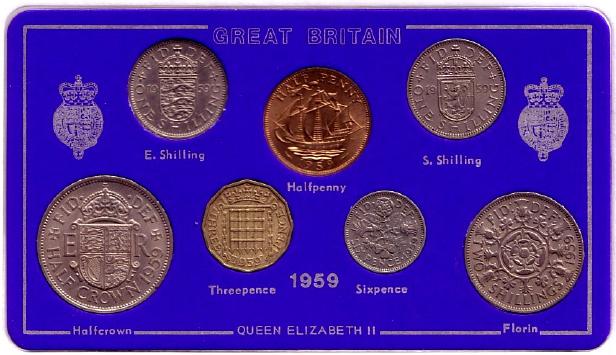

The bank
notes in circulation at the time the Ford Anglia was
being sold were as follows:
10 Shilling Note (a
“10 bob note”)
or 120 pence (written as 10s or 10/-)
From 25 October 1948
Size: 138mm x 78mm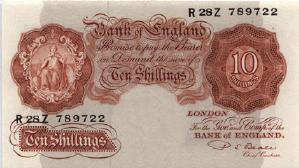
From 12 October
1961
Size: 140mm x 67mm
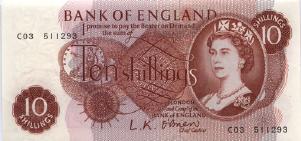
|
One Pound Note
(a “quid”)
or 240 pence (written as £1)
From 13 September 1948
Size: 151mm x 85mm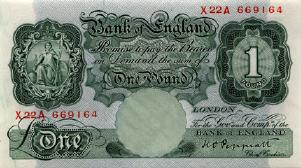
From 17 March 1960
Size: 151mm x 72mm
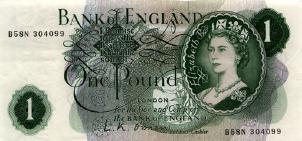

|
Five Pound Note (a
"fiver")
(written as £5 or £5 0s 0d)
From 21 February 1957
Size: 158mm x 90mm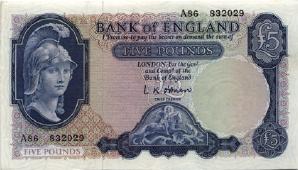
From 31 August
1963
Size: 140mm x 85mm
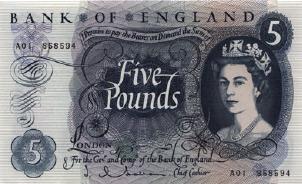
|
Ten Pound Note (a
"tenner")
(written as £10 or £10 0s 0d)
There was no £10 Note in circulation
from 1945 until 1964
From 21 February
1964
Size: 150mm x 93mm
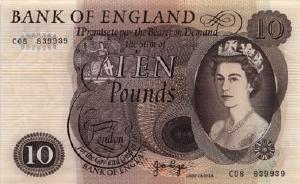
|
(Bank Notes and Coins ©
Copyright - Bank of England)

| The
“old money” system carried on until
1971, when the UK converted to a new base 10
System (Decimal Currency). This now meant that a
shilling was worth 5 New Pence, 2 Shillings was
now 10 New Pence and a Pound was 100 New Pence.
To confuse the public even more, the 5 New Pence
and 10 New Pence coins were exactly the same size
and weight as the old 1 shilling and 2 shilling
coins, which could still be used well after 1971.
Other coins were replaced by smaller versions
(the Penny and Halfpenny coins), others were
withdrawn altogether (the Farthing, Threepence,
Sixpence, Half Crown and Crown) and some
altogether new coins were introduced (the Twenty
and Fifty New Pence pieces) but this is a whole
other story.

(Article Copyright © MellY
Designs - Please do not Reproduce without
Permission)
|


  

|
|

